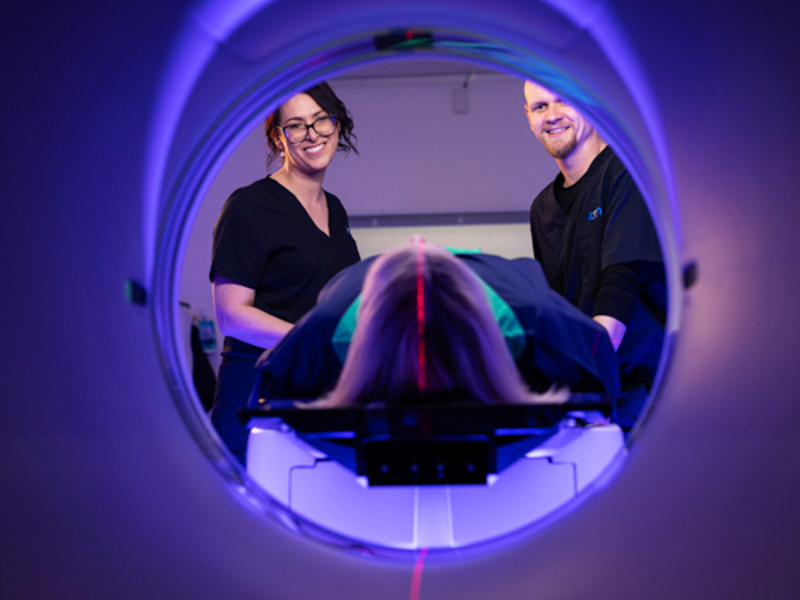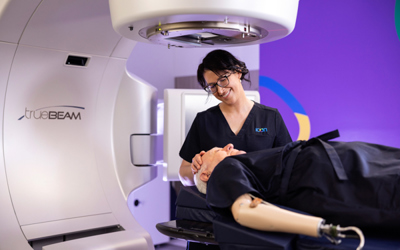What is stereotactic radiotherapy?
Stereotactic technology is an advanced form of external beam radiation therapy used to treat specific tumour or disease types with a low number of treatment sessions (typically 1 – 5), commonly located in the brain, spine, lung, liver, pancreas, kidney, prostate, as well as other areas of the body as determined by the patients oncologist.
Stereotactic radiotherapy can also be referred to as stereotactic body radiation therapy (SBRT), stereotactic ablative radiation therapy (SABR), or stereotactic radiosurgery (SRS). It is characterised by treating a well-defined volume with very high precision using a high dose of radiation and with a small number of treatment sessions. For example, a typical external beam radiation therapy treatment will be delivered using up to around 30 treatment sessions, whereas a stereotactic radiation therapy treatment will be delivered in up to 5 treatment sessions.
It can be used to treat both primary disease and metastatic disease (sometimes referred to as secondary tumours). These are tumours that have spread from other organs in the body and cancers in the brain, spine, bones, liver and lung.
Stereotactic radiation therapy by cancer type
Stereotactic radiation therapy for oligometastatic disease
Stereotactic radiation therapy can be used to treat oligometastatic disease which are secondary tumours that have spread beyond the original tumour and form within various organs. Oligometastatic disease may be treated with stereotactic radiation therapy with the aim of improving patient outcomes and controlling the disease.
Our world-class treatment technology, coupled with advanced imaging techniques, like a PET/CT scan, can be a powerful tool to clearly identify and accurately target these small tumours that might otherwise go undetected. Our expert radiation oncologists will be able to advise you if this treatment option is available and recommended for you.

Ready to discuss your care?
We’re here to support you through your treatment. Get in touch with us for more information about our centre and the services we offer.




